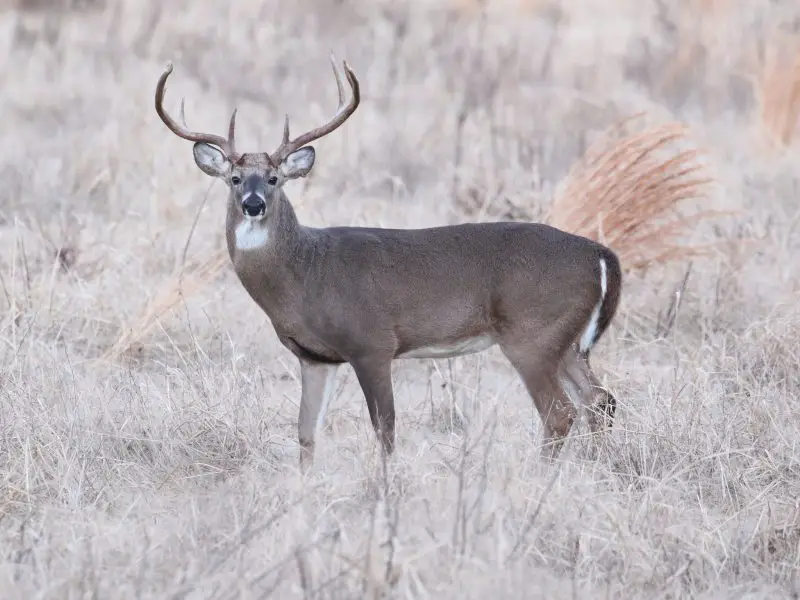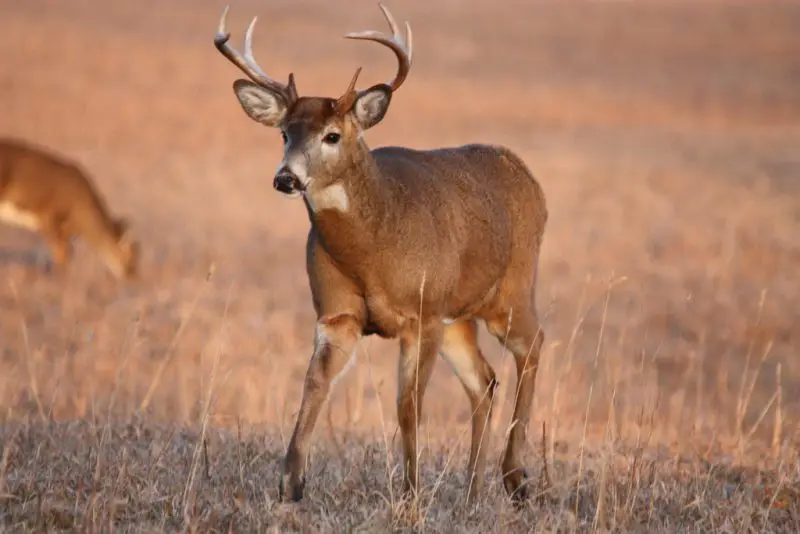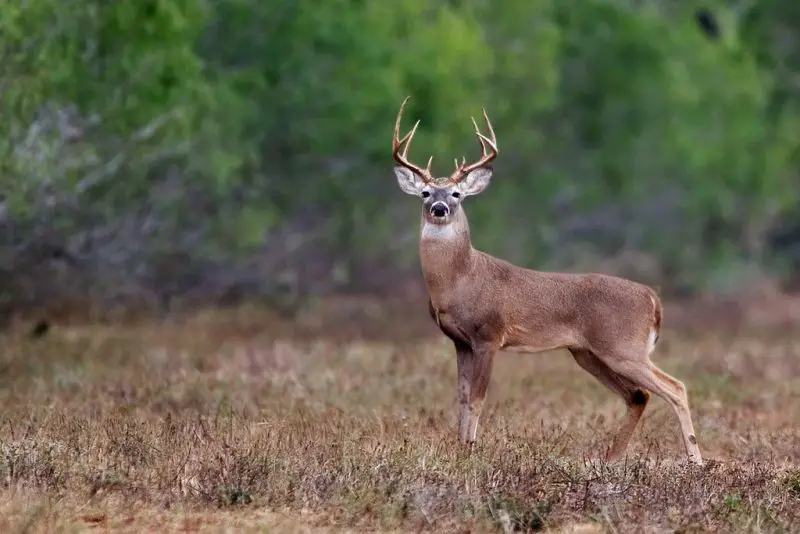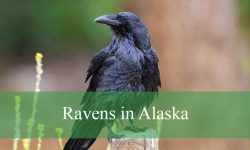Alabama’s forests, wetlands, and farmlands are home to thriving populations of white-tailed deer. While there’s only one official species, decades of conservation and restocking have introduced genetic diversity across the state.
Today, you can find three distinct subspecies or genetic types of white-tailed deer in Alabama. Each has unique traits shaped by its origin—whether native, northern, or western. These differences influence their size, antler shape, and adaptability to local environments.
In this guide, we’ll explore the three main subspecies of deer in Alabama, how to identify them, and where they’re most commonly found. Understanding these variations adds depth to wildlife observation and deer management across the region.
Overview of Deer in Alabama
The white-tailed deer is a versatile and adaptable species native to North America. In Alabama, it has a long history as both a treasured game animal and an important part of the ecosystem. The state’s population of white-tailed deer nearly vanished in the early 20th century due to unregulated hunting and habitat loss. Thanks to state-led conservation programs and carefully planned restocking efforts, deer numbers have rebounded dramatically.
Interestingly, the restocking introduced genetic diversity into Alabama’s deer herds. Deer brought in from other states—such as northern and Texas subspecies—have intermixed with the native populations. The result is three identifiable subspecies that differ in size, antler characteristics, coat color, and habitat adaptability.
Subspecies of Deer Found in Alabama
White-tailed Deer (Odocoileus virginianus)

The white-tailed deer is the only native and most widespread deer species in Alabama. It is easily recognized by its reddish-brown coat in summer, which turns grayish in winter, and the distinct white underside of its tail. When alarmed, it raises its tail upright like a flag, signaling danger to other deer. Bucks grow antlers every year, typically with several tines, and shed them in late winter.
Adult white-tailed bucks in Alabama usually weigh between 150 and 200 pounds, while does are smaller, averaging 90 to 120 pounds. The size of deer can vary across the state depending on genetics, age, and habitat. Bucks grow larger antlers in areas with good nutrition, and some have body traits influenced by introduced northern or Texas subspecies.
White-tailed deer are most active at dawn and dusk and prefer habitats like hardwood forests, pine thickets, agricultural fields, and swamps. They are herbivores, feeding on a wide range of foods including acorns, clover, persimmons, soybeans, and young shoots. Their adaptability allows them to thrive in both wild and semi-urban areas.
Breeding season, or rut, varies slightly across Alabama but generally occurs from late November to early January. Fawns are usually born in late spring or early summer after a gestation period of around 200 days. White-tailed deer are found in every county of Alabama and are managed as a game species through hunting seasons and bag limits.
Northern White-tailed Deer (Odocoileus virginianus borealis)

The northern white-tailed deer is not native to Alabama but was introduced during restocking efforts in the mid-20th century. Native to the northeastern United States, this subspecies is larger and more cold-tolerant than Alabama’s native deer. They share many visual traits with local deer but may exhibit larger body mass and thicker coats during the colder months.
Bucks from this subspecies can weigh up to 250 pounds in prime condition, while does may reach 130 to 160 pounds. Their antlers tend to be heavier and more symmetrical than those of southern deer. In Alabama, pure northern white-tailed deer are rare, but their genes are present in populations in the northern and central parts of the state.
Northern white-tailed deer are generally found in forested upland areas, particularly in regions like Bankhead National Forest, where they were released decades ago. These deer feed on acorns, woody browse, fruits, and agricultural crops, and they require more calories during winter due to their larger size and metabolism.
The breeding season of this subspecies aligns with Alabama’s general rut, although some populations may breed slightly earlier, a trait inherited from their original northern habitats. While not easily distinguished in the field today, their legacy lives on in the genetics of Alabama’s modern deer herd.
Texas White-tailed Deer (Odocoileus virginianus texanus)

The Texas white-tailed deer is another introduced subspecies, brought to Alabama during population recovery programs in the 20th century. Native to Texas and northern Mexico, this deer is more heat-tolerant and smaller than the northern variant, making it well-suited for southern Alabama’s warmer climate.
Bucks of this subspecies usually weigh between 130 and 170 pounds, and does average around 90 to 110 pounds. Compared to northern deer, they have slightly narrower bodies and smaller antlers, but their coat color and tail markings are nearly identical. Their behavior and appearance generally blend in with Alabama’s native white-tailed deer.
These deer were released primarily in western and southern Alabama and have since interbred with native populations. They are typically found in pine forests, mixed woodlands, and agricultural edge habitats. Their diet includes browse plants, forbs, mast crops like acorns, and row crops such as peanuts and corn.
The rut for Texas white-tailed deer introduced to Alabama aligns with local populations, peaking between late November and December. While they are no longer considered genetically pure due to interbreeding, their traits—such as heat resilience and early sexual maturity—have influenced Alabama’s overall deer genetics, especially in southern counties.
How to Identify Deer Subspecies in Alabama
Identifying the different subspecies of deer in Alabama involves observing several physical characteristics such as size, antlers, and coat color. Generally, northern white-tailed deer are larger and more robust compared to the others. They tend to have a heavier body build, which helps them survive colder climates. In contrast, Texas white-tailed deer are smaller and more slender, adapted to warmer and drier environments. Native Alabama deer typically fall between these two extremes in terms of size and body structure.
When it comes to antlers, northern bucks usually sport heavier and more symmetrical antlers with multiple tines, reflecting their genetic traits and the rich nutrition available in their habitats. Texas bucks, on the other hand, have narrower antlers with fewer tines, consistent with their smaller body size. Native bucks exhibit moderate antler size and branching that falls somewhere in between the northern and Texas subspecies.
Coat color is another key factor in identification. Northern deer grow thicker and darker coats during winter to withstand colder temperatures. Texas deer have lighter and thinner coats that suit warmer climates. Native Alabama deer show the typical seasonal color changes, shifting from a reddish-brown in summer to a grayish-brown in winter. By considering these traits together—size, antlers, and coat—observers can often distinguish which subspecies of white-tailed deer they are seeing in Alabama’s diverse habitats.
FAQs about Deer in Alabama
What species of deer live in Alabama?
Alabama is home to only one native species of deer: the white-tailed deer (Odocoileus virginianus). However, multiple subspecies and genetic strains exist in the state due to restocking efforts, including deer from northern and Texas populations.
Are mule deer or elk found in Alabama?
No, mule deer and elk are not found in the wild in Alabama. The state only supports populations of white-tailed deer. Elk once roamed the region but were extirpated and have not been reintroduced.
Where in Alabama can I see deer?
White-tailed deer can be seen throughout all 67 counties in Alabama. They are especially common in areas like Bankhead National Forest, Black Warrior WMA, Tuskegee National Forest, and even suburban neighborhoods with forest edges.
When is deer breeding season (rut) in Alabama?
The rut in Alabama typically peaks from late November through early January, depending on the region. Northern Alabama may experience the rut earlier than southern counties.
How big do deer in Alabama get?
Adult white-tailed bucks in Alabama typically weigh between 150 and 200 pounds, though some larger individuals influenced by northern genetics can exceed 250 pounds. Does usually range from 90 to 120 pounds.
What do white-tailed deer eat in Alabama?
They eat a variety of plant matter, including acorns, grasses, herbs, forbs, shrubs, and agricultural crops like soybeans, corn, and peanuts. Their diet changes seasonally based on availability.
Is deer hunting legal in Alabama?
Yes, deer hunting is legal and regulated by the Alabama Department of Conservation and Natural Resources (ADCNR). Hunters must follow season dates, bag limits, and tagging requirements.
Are deer a problem in urban or suburban areas?
In some suburban areas, deer populations can become overabundant, leading to vehicle collisions, garden damage, and habitat degradation. Management strategies like regulated hunting and fencing are used to control numbers.
Can I feed wild deer in Alabama?
Feeding deer is discouraged, as it can lead to unnatural behavior, increased disease transmission, and dependence on human food sources. Baiting is allowed during hunting season but regulated.
Do white-tailed deer in Alabama have natural predators?
Yes, common predators include coyotes, bobcats, and black bears, especially for fawns. Humans are the primary predator of adult deer through regulated hunting.






